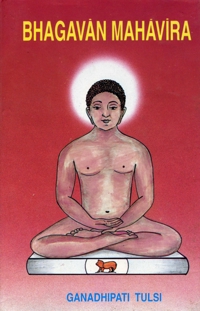| 1 | Before The Advent Of Bhagavan Mahavira |

wenty-five hundred years ago, the vast Indian sub-continent was divided into a number of tiny kingdoms. Although geographical expanse of the country at that time was larger than what it is today, there was nobody competent enough to bind these states into a single political unit. There was no Cakravarti (emperor), nor a central political leadership, as we understand it today.
There were two Systems of government in the Eastern region.
The states of Anga, Magadha, Vatsa etc. were monarchies. Those of Kasf, Kaulala, Videha etc. on the other band were republics. Two of these republics were quite well known, the Republics of the Vajjis or Licchavis and that of the Mallas. Republics were later developments of monarchies and the precursors of democracies. The Licchavis founded their Republic with a view to consolidating their political power. The credit for its foundation goes to Cetaka, who was a wise and valorous king of Videha. He was also the President of the whole Republic. This Republic was the union of eighteen political units, nine of which belonged to the Licchavis and the remaining nine to the Mallas.

[ ]
The Kings of each unit comprising the Vajji Republic were called Gananayakas. The council of the Gananayakas was called Gana Sabha or Republican Council. It made the constitution and the laws. The individual units were governed in accordance with the constitution of the Gana or the Union. The Vajji Republic was rich and well developed in the fields of Politics, Economics, Society and Religion. The monarchists were highly jealous of this powerful Republic. They were bent upon destroying it. But they were helpless in the face of the powerful Vajjian army.
| Vaisali is now the Village Basadha in the Ratti Paragana of District Muzaffarpur. |
Videha with its capital at Vaisali was the biggest unit. Vaisali was divided into three zones. The first zone consisted of seven thousand residential houses with golden domes. The middle of the town consisted of fourteen thousand houses with silver domes. The third zone consisted of twenty-one thousand houses with copper domes.
These zones were inhabited by the high, middle and lower classes respectively. Vaisali was not only the capital of the Licchavis, it was the capital of the entire Vajji Republic. It was enclosed within four city walls, each at a distance of two miles from the others. It had several ramparts and entrance-gates. The Republic was a confederation of six clans viz. the Ugras, the Bhojas, the Rajanyas, ihe Iksvakus (the Licchavis),
| Licchavi, Vajji (Sanskrit: Vrjji) and Vaiialika are Synonyms. Manusmrti 10/10, speaks of the Licchavis as Vratya. |
The Malla Republic was divided into two units, one in the north-west with its capital at Kusinara and the other in the south-east with Pava as its capital. It extended as far in, the east as the river Gandaka. In the west it extended up to Gorakhpur. In the north and the south it extended up to Nepal and the river Ganges respectively. Although it was an autonomous political unit, its Gananayakas were the members of the powerful Vajji Republic. Its representatives in the Republican Council were entitled to vote. The centre of the Vajji Republic lay in Videha in the north of the Ganges which divided ihe Vajjis from Magadha.
 Acharya Tulsi
Acharya Tulsi

